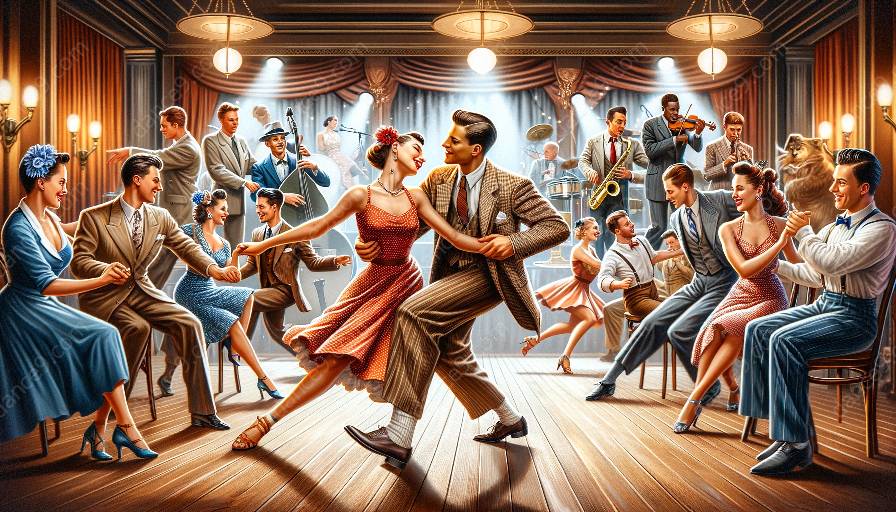Swing dance is not just about fancy footwork and smooth moves; it also demands a high level of physical fitness. Whether you're a beginner or an experienced dancer, maintaining physical fitness is crucial for improving your performance in swing dance and dance classes.
Let's explore the relationship between physical fitness and swing dance, and discover how you can enhance your fitness level to truly excel in this dynamic and energetic dance form.
The Importance of Physical Fitness in Swing Dance
Swing dance is known for its lively, high-energy movements, which require strength, agility, and endurance. Being physically fit not only enhances your ability to execute complex dance moves but also reduces the risk of injuries and improves overall endurance during longer dance sessions.
Additionally, physical fitness contributes to better posture, balance, and coordination, all of which are essential for mastering the intricate steps and rhythms of swing dance. Moreover, improved physical fitness can enhance your stage presence and confidence, allowing you to fully engage with the music and convey the joy of swing dance to your audience.
Training for Physical Fitness in Swing Dance
To enhance your physical fitness for swing dance, consider incorporating specific exercises and training regimens that target the key aspects of fitness required for this dance form. Here are some essential components to focus on:
- Strength Training: Engage in resistance exercises to build and tone your muscles, targeting the lower body, core, and upper body to support a wide range of movements in swing dance.
- Cardiovascular Conditioning: Improve your cardiovascular endurance through activities like running, cycling, or high-intensity interval training, which will help you sustain your energy levels throughout dance classes and performances.
- Flexibility and Mobility: Incorporate stretching and mobility exercises to maintain flexibility, which is essential for executing the fluid and dynamic movements characteristic of swing dance.
- Balance and Coordination: Practice exercises that challenge your balance and coordination, such as yoga or specific balance drills, to enhance your stability and movement precision on the dance floor.
- Footwork and Rhythm Drills: Dedicate time to practicing footwork patterns and rhythms outside of dance classes to improve your technique and overall agility.
Integrating Physical Fitness Into Your Dance Training
While focusing on specific fitness exercises is important, integrating physical fitness into your regular dance training routine can further optimize your performance in swing dance. Consider the following strategies:
- Warm-Up and Cool-Down: Prioritize thorough warm-up routines before dance classes to prepare your body for the physical demands of swing dance. Incorporate dynamic stretches and movement patterns that mimic dance steps. Likewise, implement cooldown routines to aid recovery and prevent muscle soreness.
- Cross-Training: Engage in complementary physical activities, such as strength training, Pilates, or swimming, to enhance overall fitness and prevent overuse injuries common in dance.
- Nutrition and Hydration: Maintain a balanced diet and stay properly hydrated to support your physical fitness and overall well-being, as these factors significantly influence your performance in dance classes and rehearsals.
- Rest and Recovery: Allow adequate time for rest and recovery between intensive dance sessions to prevent burnout and promote muscle repair and growth.
Benefits of Improved Physical Fitness for Swing Dancers
Enhancing your physical fitness for swing dance offers a multitude of benefits that extend beyond the dance floor. Some of these benefits include:
- Increased Stamina and Endurance: Improved physical fitness enables you to dance for longer durations with greater energy and stamina.
- Reduced Risk of Injuries: Stronger muscles, better balance, and increased flexibility contribute to a lower risk of dance-related injuries, allowing you to sustain your dance practice over the long term.
- Enhanced Performance Quality: Better physical fitness translates to improved execution of dance moves, leading to enhanced performance quality and artistic expression.
- Overall Well-Being: Regular physical activity and improved fitness levels contribute to better mental and emotional well-being, promoting a holistic approach to dance practice and performance.
Conclusion
Physical fitness plays a pivotal role in the success and enjoyment of swing dance. By prioritizing your physical fitness and integrating targeted exercises and training into your routine, you can elevate your performance in dance classes and truly embody the spirit and vitality of swing dance. Embrace the dynamic nature of swing dance and work towards optimizing your physical fitness to thrive as a confident and accomplished swing dancer.













































































